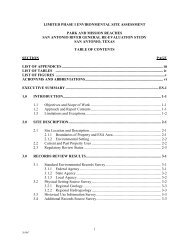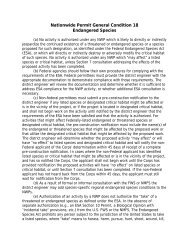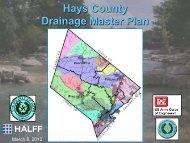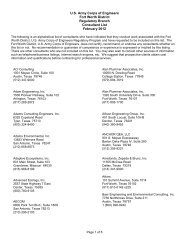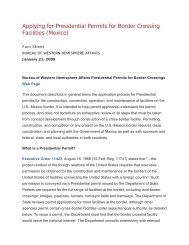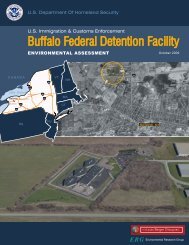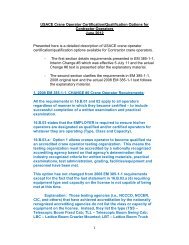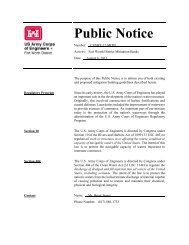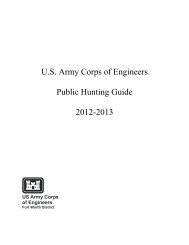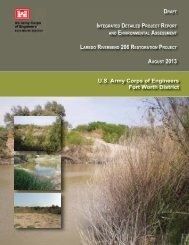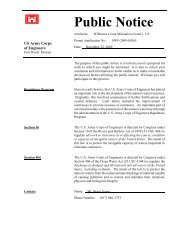environmental assessment us border patrol, tucson sector
environmental assessment us border patrol, tucson sector
environmental assessment us border patrol, tucson sector
Create successful ePaper yourself
Turn your PDF publications into a flip-book with our unique Google optimized e-Paper software.
3-28123456789101112131415161718192021222324252627282930313233343536373839maintain the confidentiality of these sites. EO 13175 outlines the official United Statesgovernment policy on consultation and coordination with American tribal governments. Theorder emphasizes formal recognition of the American Indian Tribes’ stat<strong>us</strong> as “domesticindependent nations” that have entered into treaties with the United States guaranteeing theirright to self-government. It stipulates that this consultation would be done on a “government togovernment basis.” Cultural resources consist of prehistoric and historic districts, sites,structures, artifacts, and any other physical evidence of human activities considered important toa culture, subculture, or community for scientific, traditional, religio<strong>us</strong>, or other reasons.3.8.1.1 Cultural OverviewSoutheastern Arizona has a rich cultural heritage that extends back tho<strong>us</strong>ands of years. Ageneral chronological sequence for the Douglas area and surrounding region is outlined below(Table 3-3).Table 3-3. Prehistoric Sequence for the Douglas AreaPeriodDatesPaleoindian Tradition 9500 – 8000 B.C.Archaic 7000 B.C. – A.D. 150Pre-Classic A.D. 150 – 1150Classic A.D. 1150 – 1450Protohistoric A.D. 1450 – 1700Historic A.D. 1700 –1912StatehoodA.D. 1912 – PresentPaleoindian PeriodUncontested dated evidence of human occupation in the North American southwest begins withthe Paleoindian period, at ca. 9500 B.C. By the end of the late Pleistocene glaciations, migratingbands are believed to have crossed the Bering land bridge from Siberia and dispersed throughoutNorth America. The earliest securely dated sites are mammoth kill sites (e.g., Murray Springs,Lehner, and Naco) located nearby in the upper San Pedro drainage that have been radiocarbondated to between 11,500 and 11,000 years ago (Haynes 1987; Haynes and Haury 1975). Themain diagnostic artifacts from these sites are Clovis-style, fluted projectile points. Subsistenceduring Paleoindian times emphasized big-game hunting; however, a variety of small gameanimals and wild plants were exploited on a regular basis as well (Meltzer 1993).Archaeological evidence suggests that Paleoindian populations lived in small, highly mobilegroups that moved on a seasonal basis depending on plant and animal availability.Archaic PeriodThe Archaic period is closely linked to a climatic shift that brought about warmer and drierconditions in southern Arizona, beginning at around 9000 B.C. and resulting in essentiallymodern conditions by about 6000 B.C. (Van Devender and Spaulding 1979). The Archaicperiod has been traditionally subdivided into early, middle, and late components, based primarilyon differences in projectile point styles. In recent years, the name of the Late Archaic period hasbeen changed to the Early Agricultural period, reflecting the widespread emphasis on cornagriculture in many parts of the North American southwest after 1000 B.C. (Huckell 1995; Willsand Huckell 1994). The Early Agricultural period has been further subdivided into a San Pedrophase (1700–500 B.C.) and a Cienega phase (500 B.C.–A.D. 150), based on the presence ofDouglas FOB EADraftAug<strong>us</strong>t 2011



